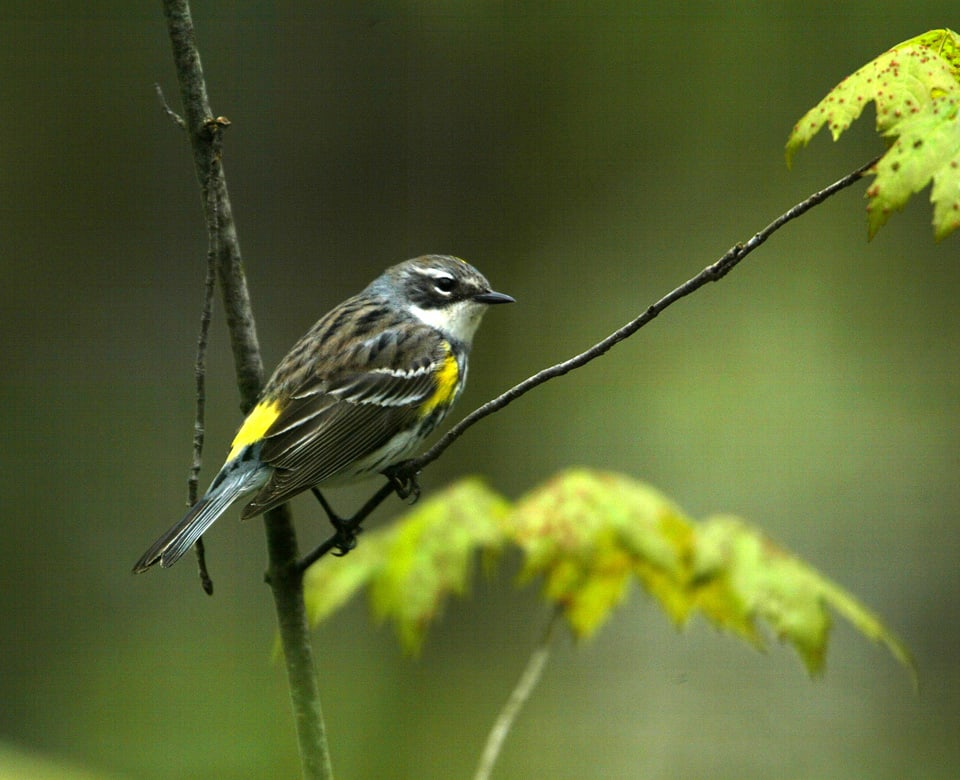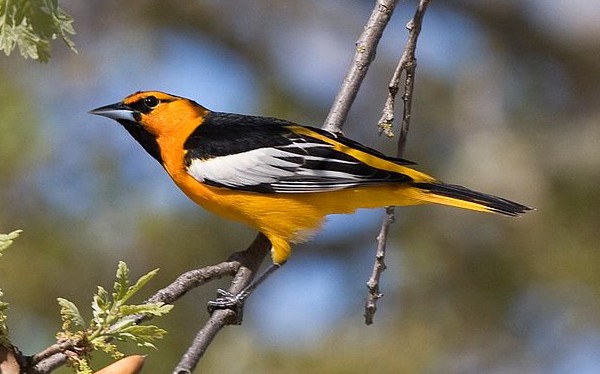One of the best-known warblers in the United States—and easily the most widespread and numerous in winter—the yellow-rumped warbler is a paradox: Its plumage and its habitats are very variable; yet, it is relatively easy to identify whenever you find it. The yellow-rumped warbler is 5 to 6 inches long, with a sharp thin bill and slightly notched tail.
In breeding plumage, the eastern male is blue-gray with a white throat and belly, black streaking on the back, a black face patch, two white wing bars, black bib, and yellow spots on the crown, shoulders, and rump.
Spring females are browner and duller than their mates. Immatures and fall adults are brown above, with brown-streaked underparts and little or no yellow visible. The one constant in all plumages is the bright yellow rump.
Listen for
Song is a weak trill, usually trailing off toward the end and dropping in tone: tee-tee-tee-brr-brrbrr! The call note, a loud tchep!, is often a better year-round clue to the presence of this species.
Find it
Breeding in the far north, the eastern race of the yellow-rumped warbler is known in most of the country only as a migrant or winter resident. Migrants can be found in woodlands, hedge-rows, thickets, and even along beaches as they stream through in large flocks.
Winter birds congregate wherever they can find berries, their principal cold-weather food. In Florida, yellow-rumps are known to drink the juice of broken or fallen oranges, and throughout their winter range they will consume weed seeds large and small. Some yellow-rumps come to backyard feeders where they eat a variety of fare.
Feed it
Primarily eat insects during breeding season and fruits in the winter and during migration. Yellow-rumped Warblers are hardy birds, adapted to live on berries (especially wax myrtle fruits) when cold weather makes insects scarce.
Nesting Behavior
For nesting, the yellow-rumped warbler selects conifer forests, generally spruce, pine, or cedar. The female builds the nest on a horizontal branch, anywhere from 5 to 50 feet high in the tree, using bark, twigs, weeds, and roots to create an open cup that is then lined with hair and feathers.
The female incubates the four or five eggs for 12 to 13 days. When the chicks hatch, both parents feed them for 10 to 12 days until fledging, and then the male feeds them for a time afterward. There are usually two broods per year.




